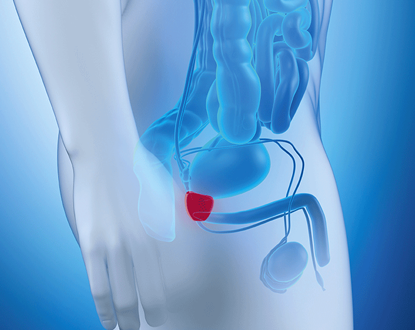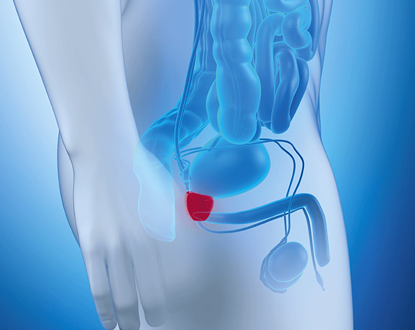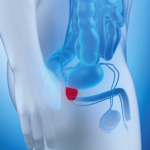Prostate cancer remains by far the most common male cancer (56,800 new cases in 2012) ahead of lung cancer (28,200 new cases) and colorectal cancer (23,200 new cases). It is the third leading cause of cancer mortality in men with more than 9,000 deaths annually. A closer look at a still poorly understood pathology.

Benign tumors of the prostate
After the age of 50, nearly half of men are affected by a prostate adenoma. This benign tumor is most often detected during a medical rectal examination. When large, the adenoma can cause urinary problems, which can be particularly bothersome and may lead to impaired kidney function. A simple medication is usually sufficient to treat this pathology, but surgery may be necessary in some cases.
Prostate cancer
No preventive measures exist to prevent this cancer. However, some people have a higher risk of being affected:
- Individuals with two close relatives affected
- Individuals with a close relative affected before the age of 45
-
People of African or Caribbean descent
How to detect it? Medical examination remains the most effective screening method, as urinary symptoms do not necessarily appear in the early stages of the disease. The first diagnostic method is a clinical examination, consisting of palpating the prostate during a rectal examination. Although unpleasant and considered degrading by some, it is essential to remember that this examination saves lives! The second fundamental element of diagnosis lies in the measurement of PSA (prostate-specific antigen) levels through a simple blood test. Ideally, it should be below 4 ng/ml. Tissue samples, or biopsies, further complete the diagnosis.
Treatments
To combat this cancer, doctors have several options:
- Surgery
A complete removal of the prostate can be performed under general or epidural anesthesia. However, the procedure has disadvantages, with risks of temporary urinary leaks and risks of impotence.
- Radiotherapy
Whether internal or external, this method aims to destroy the tumor while sparing surrounding healthy tissues as much as possible.
- Ultrasound treatment
Performed under general anesthesia, this method consists of delivering high-frequency ultrasound to the prostate through a probe inserted into the rectum. This technique is most frequently used in patients over 75 years old with localized and less aggressive cancer.
Currently, organized screening for prostate cancer is not recommended by health authorities. Urologists particularly recommend monitoring for individuals aged 55 and over. A medical consultation is necessary in case of urinary symptoms, as the earlier a cancer is detected, the better the chances of curing it.



